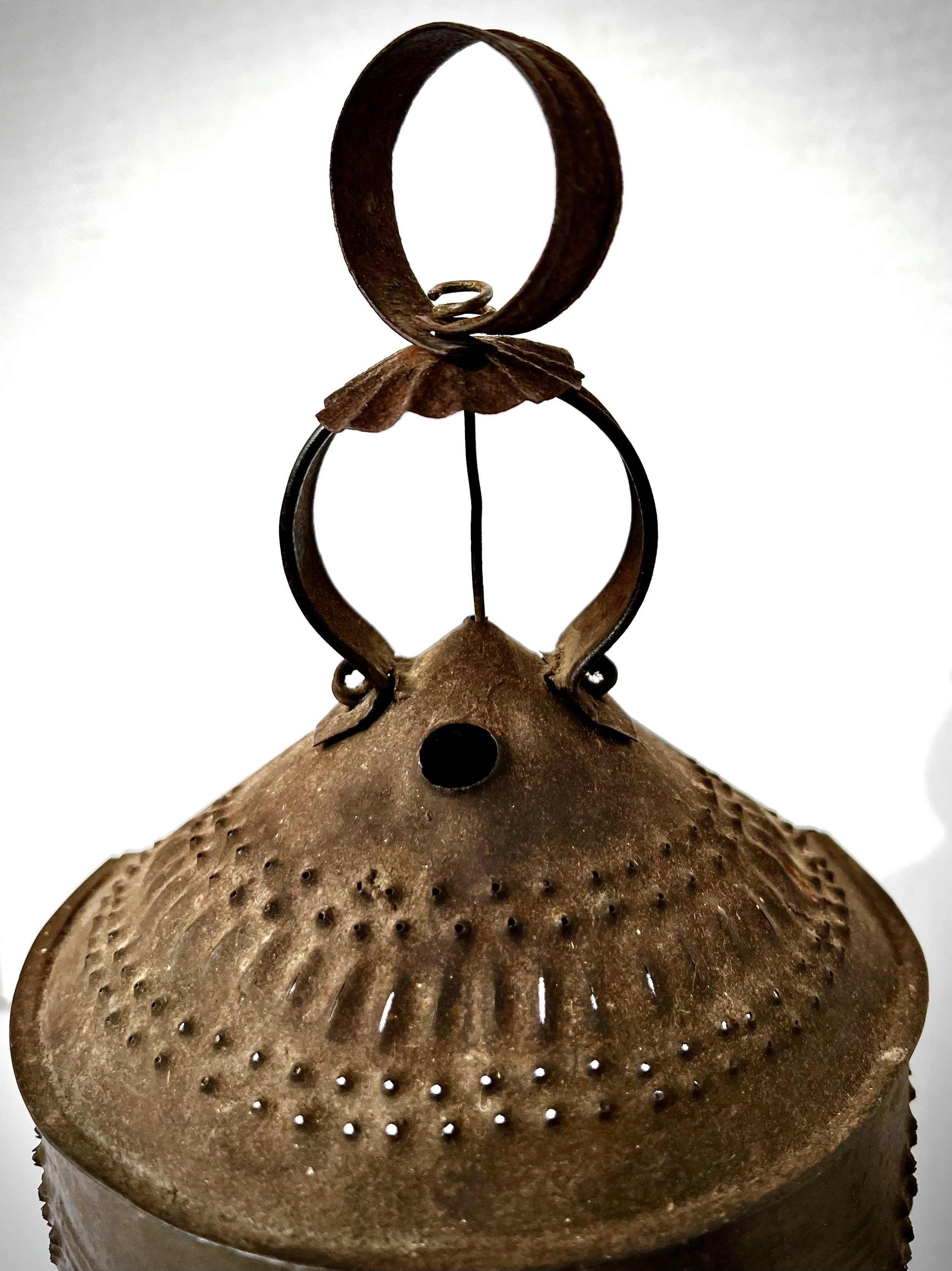Tin Lantern
Having witnessed the process used by a master tinsmith to fabricate this type of lighting device, so common two centuries ago, I can tell you that it was a complex, imaginative, highly skilled and, not to mention, very noisy business! I suppose some creative colonial revivalist came up with a name for this type of halved lantern, if so, I have forgotten it. Somewhere between a half and three quarters of the normal circumference of a pierced lantern, this construction provides for more illumination by incorporating a large pane of old wavy glass on one side. The lantern is covered with piercings and punctures which create designs of radiating circles and Palladian arches; the entirety being folded, crimped and soldered together. It hangs 16 inches, 6 ½ inches wide, 4 ¾ inches deep. There is a hole in the bottom, directly under the original candle socket, where I suppose a wire came through to an electric candle (see photo). New England, ca. 1820.






